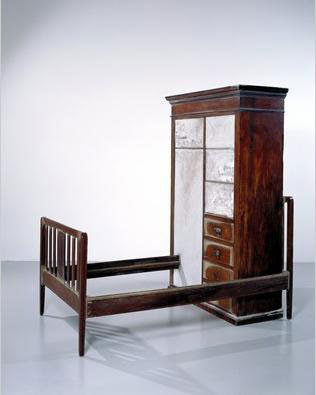 |
| Michelangelo Piedad, 1498-99, 174 X 195 cm |
 |
| Peter Paul Rubens, The Descent from the Cross , 1612-14, 420 X 310 cm |
 |
| Jacques Louis David, The Death of Marat , 1793, 165 X 128 cm |
why the painting The Death of Marat is so important? Adriana, Cali, Colombia Dear Adriana, Jean Paul Marat was a doctor, writer and political scientist, polyglot English, French, English, Italian and German. Marat became a politician to help the French Revolution. He was the editor of L'Ami de Peuple (The Friend of the People). Marat was a radical impact for changes in the aristocracy.
The Death of Marat by Jacques Louis David in the Museum of Fine Arts of Belgium and is a historical portrait done to immortalize and make a martyr. Marat was a leader of the French Revolution of 1789. The portrait was commissioned by the National Convention, which was the assembly that governed the revolution. Marat was 49 when he died, but David did a portrait painted idealized because Marat is young, strong and healthy. He had a rare disease in his skin, it made when the police hid in the drains Royal Paris, so I had to work hours after hours of sitting in the bathtub with a wood and use it as a desk while taking medicinal baths.
David was a friend of Marat and his intention was to portray him as a secular man, but holy and make an example of virtue. Marat disease is not noticeable in the paint. There is reason for every detail in the table, there is an economy of objects and this is to make it more symbolic.
David takes the viewer as a witness in the room where Marat was stabbed, is dying and is in a bloodbath. Marat is seconds before giving his last breath, he still holds the pen in writing position with the left hand holds the paper delivered by the assassin Charlotte Corday. The paper says that someone needs help, "the friend of the people." David's intention to put the note is to be interpreted Marat was going to answer the note. Corday, a supporter of the aristocracy, tricked him to come to him and stabbed him when he read the note.
Marat has his eyes closed, smiling peacefully and very quiet, and sleeping. His almost lifeless arm falls into the same position of Jesus Christ of Michelangelo's Pieta sculpture. His head falls to the left side as the head of Jesus Christ from the Cross, made by Paul Rubens and Rembrandt. The two used the same head position. Marat's head is covered with a white cloth with vinegar that makes a turban and uses it against the skin disease he had.
Marat mortal wound and knife are seen in the shade. The petition of the murderer is well lit in the hands of Marat. His face, his arms and objects in the wooden box is a fusion of light, but his body has shadows, creating an interplay of elements. The folds of the fabrics also create harmony, giving a strong sense of realism.
natural light comes from behind the window of Marat because the shadows are in your body and under the paper. That means that the light is on the right is a spiritual light and shadow that does not work. The dark
back, which occupies half of the table, force the viewer to look at Marat and thus enhance the foreground where is Marat. The room is decorated, the blank wall and the wooden box were made to show that Marat was poor but wanted to help others. Yellow colors were used to soften the horror of the scene, and the spiritual light of the right is to show that the sky is calling. The painting was done in a rectangular shape vertically, pointing to heaven where he would go after the death of Marat.
The paper over the wooden box says "your money you will give this mother of 5 children whose husband died defending the fatherland" With this note Marat David wants to make a hero and a saint who was willing to help in the difficulties the people of France, and is therefore "the friend of the people." Although patient was always willing to help others.
David plays with the space of painting, making the wooden box on the edge of the picture plane. The money and the note are as close to the edge of the wooden crate that is in the space of the observer. If someone opened a window in the room, the wind botaría at the foot of the beholder.
Adriana, you have to remember is that this painting is considered the most important painting of David because his intention of making a martyr Marat, with simplicity and virtue are felt by the observer. David, who was a professor of art, religious iconography used pasado para hacer a Marat un héroe de la revolución. La pintura causó mucha pena en su tiempo y todavía lo hace hoy día.
Gracias por tu pregunta Adriana. Me gusta esta clase de preguntas sobre la lectura o interpretación de las obras famosas.
Augusto Chimpén





































